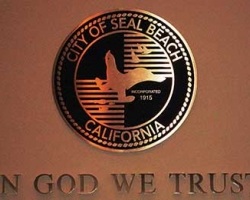The Seal Beach Planning Commission unanimously approved a resolution recommending a repeal of all height variations in the Zoning Code at the agency’s special Thursday, March 18 meeting.
The recommendation will now go to the City Council. If approved, the city Zoning Code will be changed.
A height variation is often confused with a variance. The terms are similar, but their meanings are different. When planners approve a variance, they are making an exception to the code based a circumstance unique to the property in question. The height variance is not an exception to the rules—subject to the approval of the Planning Commission, architectural features may go as much as 7.5 feet above the 25-foot (two-story) residential height limit that applies to most areas of Seal Beach. (Homes in the Surfside colony, which has smaller lots than most properties in Seal Beach, may be built as high as three stories. There are also three-story condominium complexes on Montecito Road and there are a few three-story buildings inside Leisure World.)
According to the staff report by Director of Development Services Mark Persico, In September 2009, the council asked the Planning Commission to consider eliminating height variations for covered roof access structures. In February 2010, a member of the public suggested the commission eliminate all height variations, the report said. The commissioners discussed height variations and unanimously decided to eliminate them all, according to the Persico report.
That night, planners alsounanimously approved a Mitigated Negative Declaration for the River’s End Staging Area and San Gabriel Rive Bikeway Trail improvement project. Seal Beach has received about $2 million from the San Gabriel Rivers and Mountains Conservancy to improve the bike trail and the area near the River’s End Café, where the bike trail ends.
A MND is basically a document that says environmental consequences of a project can be minimized if steps are taken to minimize them. The Seal Beach Environmental Quality Control Board on Feb. 24 recommended the Planning Commission adopt the declaration.




